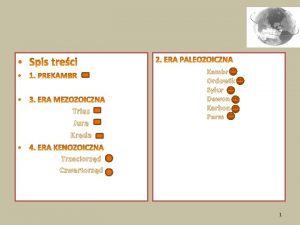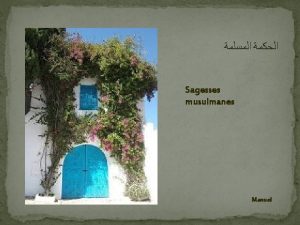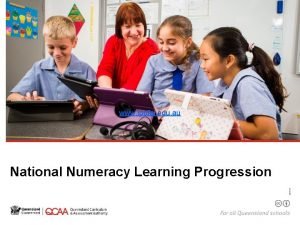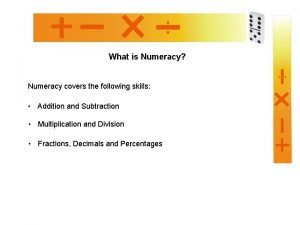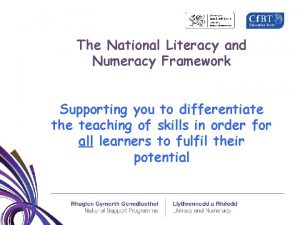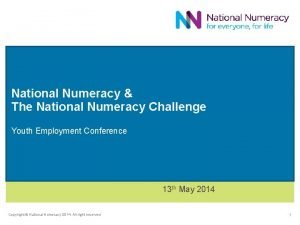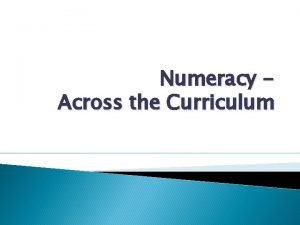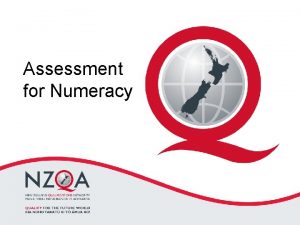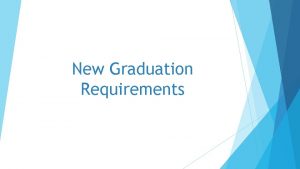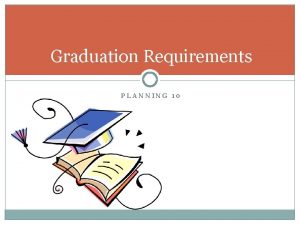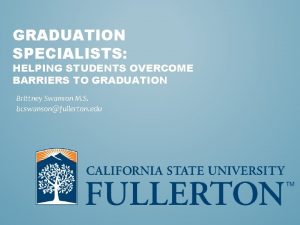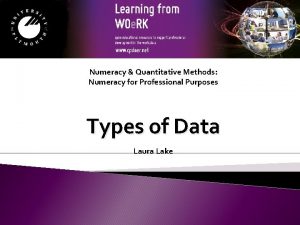GRADUATION NUMERACY ASSESSMENT All Grade 10 students plus










- Slides: 10

GRADUATION NUMERACY ASSESSMENT All Grade 10 students plus any Grade 11’s who have yet to write January 26 th & 27, 2021. You will be assigned a time and location to write

THE GR 10 NUMERACY ASSESSMENT IS… …a provincial assessment that assesses student proficiency in numeracy. It is a graduation requirement and students take the assessment in their Grade 10 year.

GR 10 NUMERACY … • Focuses on the application of mathematical concepts learned across multiple subjects from kindergarten to Grade 10. • Requires students to solve problems by using five numeracy processes (different ways of thinking and working): interpret, apply, solve, analyze and communicate

NUMERACY ASSESSMENT: WHY? • To assess your level of numeracy as a part of your graduation program • To give you and your teachers information about your learning • To help the school, district, and province understand how students are doing • To meet your grad requirements

NUMERACY ASSESSMENT AT PALMER WHEN & HOW ? • January 26 & 27 THth You will be assigned a time and location to write • Up to 3 hours (8: 30 AM – 11: 30; OR NOON – 3: 00 PM) • Computer-based

What Grade 10 Numeracy Looks Like The Grade 10 Numeracy Assessment has three sections: 1. Common section 1. Students answer 24 questions centred on four different tasks (situations) completed online 2. Questions are scored by a computer. 2. Student-choice section 1. Students choose two of four available questions and complete two writtenresponse questions on paper. These questions are based on tasks the student will have completed earlier in the common section. Students present detailed solutions to a problem using all the numeracy processes and support their thinking with explanations and assumptions. 2. Questions are marked by B. C. educators using a rubric. 3. Self-reflection section 1. These questions ask students to reflect on their experience after they have completed the previous sections. The process of reflection is part of their learning. 2. Questions are not scored.



WHAT CAN EACH STUDENT BRING TO THE NUMERACY ASSESSMENT? Students can bring a pen/pencil and an eraser. A scientific calculator is built into the online assessment however students may also bring their own calculator. An approved calculator (scientific/graphing permitted) may be used. Students cannot bring in any other material. Scrap paper and all other exam material will be provided. https: //www 2. gov. bc. ca/assets/gov/education/administration/kinderga rten-to-grade-12/assessment/bc-calculator-policy. pdf

HOW SHOULD STUDENTS PREPARE There are pre-assessment activities for students to explore ahead of time and help them to prepare. These include the sample assessment and a series of videos that explain how to solve questions using the five numeracy processes. https: //curriculum. gov. bc. ca/provincial/grade-10 -numeracyassessment
 Grade 10 numeracy assessment practice test
Grade 10 numeracy assessment practice test Name three line segments
Name three line segments Marian congregation rizal
Marian congregation rizal Plus haut plus loin que l'azur infini
Plus haut plus loin que l'azur infini Plus vous en retirez plus je deviens grand
Plus vous en retirez plus je deviens grand Jura kreda
Jura kreda Plus j'apprends plus je me rends compte de mon ignorance
Plus j'apprends plus je me rends compte de mon ignorance Numeracy continuum acara
Numeracy continuum acara What numeracy covers
What numeracy covers National literacy and numeracy framework
National literacy and numeracy framework National numeracy challenge
National numeracy challenge





